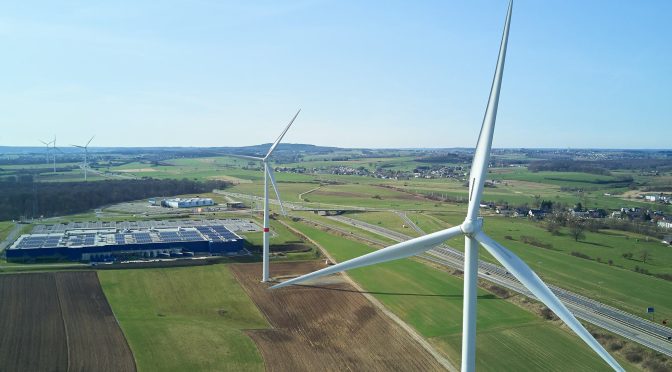Minimizing the impact of CO2 and other greenhouse gas emissions on the environment and using offsetting measures to achieve balance in the atmosphere: that’s Net Zero, a key goal to be achieved by 2050. Here’s how to do it, including the use of performance indices to measure progress: that’s the commitment of the Global Alliance for Sustainable Energy, in its recent position paper on Net Zero/ Decarbonization and in the Net Zero Pledge.
The goal of countering global warming and the intensification of extreme weather phenomena by preventing the increase in the global average temperature from exceeding 1.5°C above pre-industrial levels is called Net Zero. This is the pledge we’ve made together with the other members of the Global Alliance for Sustainable Energy, and itwas recently expressed in the Net Zero/ Decarbonization position paper, which was also the focus of a webcast broadcast on May 30. The goal of the industrial members of the Alliance is to announce by the end of 2023 their Net Zero goals in terms of Scope 1, Scope 2, and Scope 3 emissions reductions, with intermediate targets at 2030 and 2040.
First, greatly reduce emissions
To achieve Net Zero, it is necessary to drastically reduce emissions of climate-altering gases – the so-called greenhouse gases, or GHGs, of which CO2 is the main one – through the adoption of renewable energy sources and increased energy efficiency. But since some emissions may be difficult to eliminate completely, the Net Zero concept also includes the idea of offsetting: this means that residual emissions that cannot be reduced beyond a certain limit are offset through the absorption of CO2 from the atmosphere or through investment in emission reduction projects in other sectors.
Thus, the ultimate goal of Net Zero is to reach an equilibrium in which net greenhouse gas emissions are zero, enabling us to mitigate climate change and stabilize the concentration of CO2 in the atmosphere.
The role of the energy sector
According to the UN Intergovernmental Panel on Climate Change (IPCC), in order to prevent the worst of climate damage, global net anthropogenic CO2 emissions must decrease by about 45% from 2010 levels by 2030, reaching Net Zero around 2050.
To make this possible, companies in the power sector are specifically asked to set targets to achieve Net Zero by 2040. The electricity sector is a major contributor to the overall level of global emissions: according to data from the International Energy Agency (IEA), the electricity and heat generation sector is responsible for nearly half of global CO2 emissions (44%), and its rapid decarbonization will facilitate that of other sectors.
In the IEA’s Net Zero 2050 scenario, all coal- and oil-fired power plants must be eliminated by 2040. Companies must then address supply chain emissions, the so-called Scope 3 emissions. In fact, decarbonization within the supply chain plays a key role in achieving this goal.
To achieve Net Zero worldwide, the best solution is the electrification of end-use sectors. New digitalized electricity grids will be the key platforms for implementing this process. New forms of electrification will increase demand in the residential, transportation, and industrial sectors, and digitalization will make customers increasingly active in the development of distributed renewables and the introduction of flexibility into electricity distribution networks.
Why it’s important to measure progress toward Net Zero
The use of key performance indicators (KPIs) to measure companies’ commitment to Net Zero – by measuring their emissions but also their progress in terms of social responsibility – is important for several reasons. First of all, KPIs provide an objective basis for monitoring companies’ progress in achieving Net Zero goals, and thus also for comparing their performance against precise benchmarks, enabling us to assess whether the actions taken are effective and whether the company is moving in the right direction.
The KPI system makes it possible to promote transparency and accountability: companies can clearly and tangibly communicate their goals and achievements. In this way investors, customers, all other stakeholders and society as a whole can assess the real impact of companies on the environment and the climate. This also reduces “climate dumping”, which is unfair price competition from foreign imports that don’t meet quality and environmental standards.
KPIs provide a framework for making strategic decisions. By measuring results and progress, companies can identify areas where improvements are needed and make adjustments to their strategies. This enables them to allocate resources more effectively, identify opportunities for improvement based on industry best practices – through collaboration and reciprocal learning between companies – and take timely corrective action.
For the KPI system to work, third-party verification and certification of emissions is fundamental. Credibility criteria are essential in order to ensure the environmental integrity of climate action toward a decarbonized economy, as well as to provide elements of comparability and coordination.
The Global Alliance for Sustainable Energy’s Net Zero pledge
The Global Alliance for Sustainable Energy, of which Enel Green Power is also a member, has come together to work on the road map to Net Zero. Established in 2021, it is an independent global association open to all organizations that recognize the urgency of addressing the climate emergency according to the principles of the “just transition” and the need to promote and incorporate sustainability and social responsibility in the renewable energy industry. The Alliance brings together NGOs, associations and representatives of civil society; utility companies; materials suppliers and equipment manufacturers; renewable project developers; construction companies that build power plants; technical and technology partners; and end users, which include industrial, commercial and domestic energy consumers.
Renewable energy sources are already the cleanest and most sustainable solutions available for power generation: the Alliance wants them to become fully sustainable through innovation. To this end, it is committed to setting standards and KPIs for a new design approach, new business models and “end of life” solutions in line with the United Nations Sustainable Development Goals (SDGs), while also promoting international financing and collaboration and new legislation needed to support and accelerate decarbonization.


